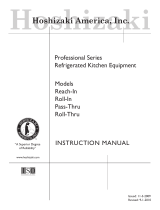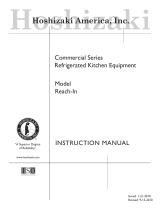
This manual should be read carefully before the appliance is serviced. Read the
warnings and guidelines contained in this manual carefully as they provide essential
information for the continued safe use, service, and maintenance of the appliance.
Retain this manual for any further reference that may be necessary.
CONTENTS
Important Safety Information............................................................................................ 4
I. General Information....................................................................................................... 7
A. Construction...................................................................................................... 7
B. Refrigeration Flow Chart.................................................................................... 8
II. Sequence of Operation and Service Diagnosis............................................................ 9
A. Sequence of Operation Flow Charts................................................................. 9
B. Service Diagnosis.............................................................................................. 10
C. Controller Check................................................................................................ 13
D. Thermistor Check ............................................................................................. 14
E. Diagnostic Tables ............................................................................................. 15
III. Controller and Adjustments ........................................................................................ 17
A. Controller with Integrated Display...................................................................... 17
1. Controller with Integrated Display........................................................... 17
a) Display Icons ............................................................................... 17
b) Controller location and Layout..................................................... 18
c) Controller Connections................................................................ 19
B. Temperature..................................................................................................... 20
1. Default Settings...................................................................................... 20
2. Temperature Setpoint............................................................................. 20
3. Changing the Temperature Display Scale (°F or °C)............................. 21
C. Defrost.............................................................................................................. 21
D. Alarm Safeties.................................................................................................. 22
E. Safety Devices.................................................................................................. 22
IV. Replacement of Components ..................................................................................... 23
A. Service for Refrigerant Lines ............................................................................ 23
B. Important Notes for Component Replacement ................................................. 26
V. Maintenance ................................................................................................................ 26
1. Condenser............................................................................................... 26
2. Power Supply Connection....................................................................... 26
VI. Preparing the Appliance for Periods of Non-Use........................................................ 27
VII. Disposal...................................................................................................................... 27
VIII. Technical Information................................................................................................ 28
A. Electrical and Refrigerant Data ......................................................................... 28
B. Wiring Diagrams................................................................................................ 29
























